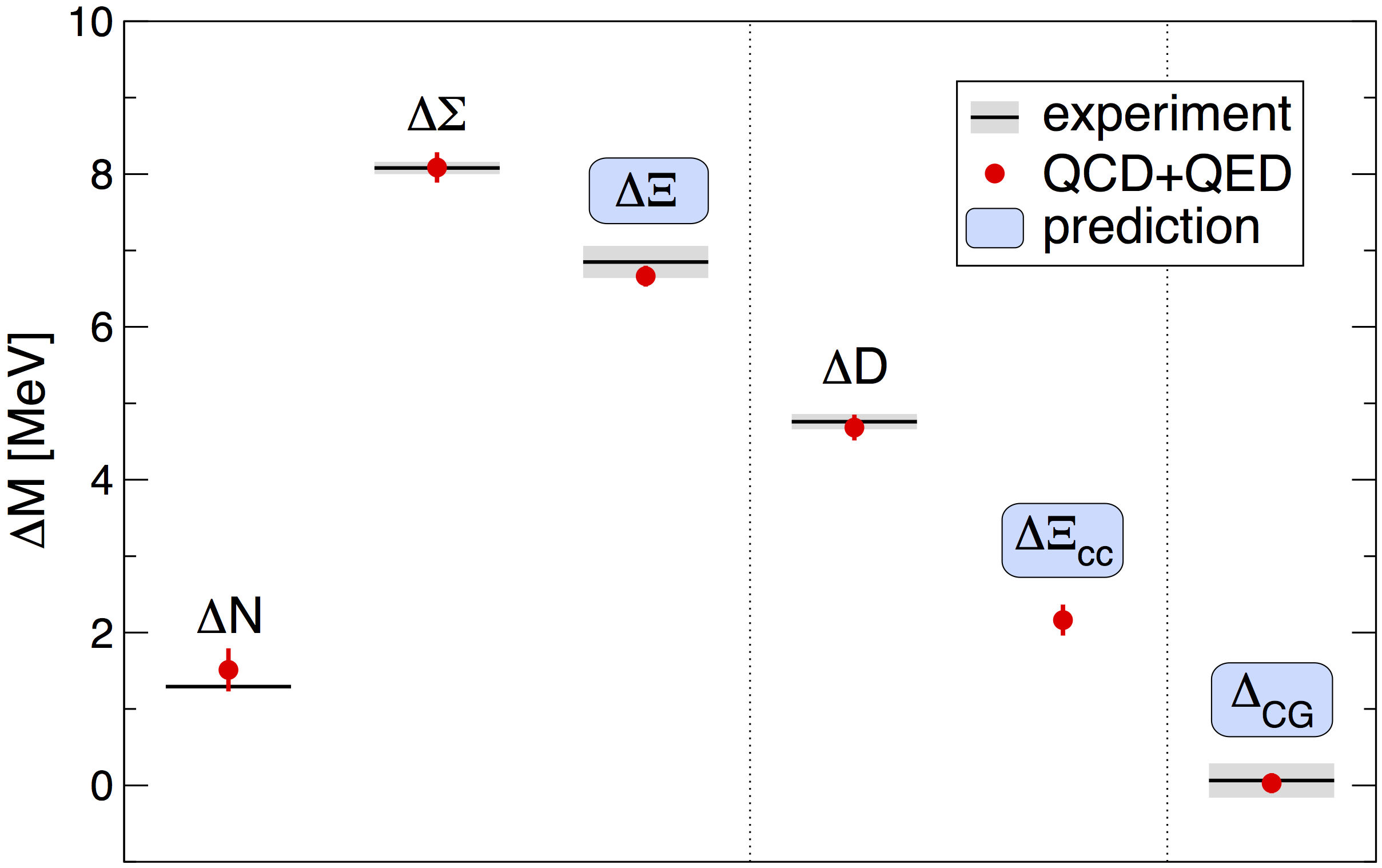Home
Ab initio calculation of the neutron-proton mass difference
Science 347 (2015) 1452
Supplementary materials
Mass splittings of hadrons (here particles composed of quarks and/or antiquarks) in channels that are stable under the strong and electromagnetic interactions. Both of these interactions are fully unquenched in our 1+1+1+1 flavor calculation. The horizontal lines are the experimental values, and the gray shaded regions represent the experimental error. Our results are shown by red dots with their uncertainties. The error bars are the squared sums of the statistical and systematic errors. The results for the neutron-proton, Σ--Σ+ and D+-D0 meson mass splittings are post-dictions, in the sense that their values are known experimentally with higher precision than from our calculation. On the other hand, our calculations yield results for the Ξ--Ξ0, and Ξcc++-Ξcc+, as well as the Coleman-Glashow difference (CG), which have either not been measured in experiment or are measured with less precision than obtained here. This feature is represented by a blue shaded region around the label.
Dependence of the neutron-proton mass difference on two combinations of fundamental parameters. On the horizontal axis, the fine structure constant, proportional to the square of the elementary unit of charge is varied from zero to twice its measured value. Along the vertical axis, it is the difference in mass between down and up quarks that is varied. The blue cross indicates the point corresponding to our universe. The black curves correspond to contours of constant neutron-proton mass difference. Each has a label indicating the value of the neutron-proton mass difference to which it corresponds. Any point in the blue region corresponds to a very different universe from ours, in which the proton could decay into a neutron through the weak interaction. Units are mega-electron-volts (MeV). The mass of a hydrogen atom is approximately 1000 MeV.
